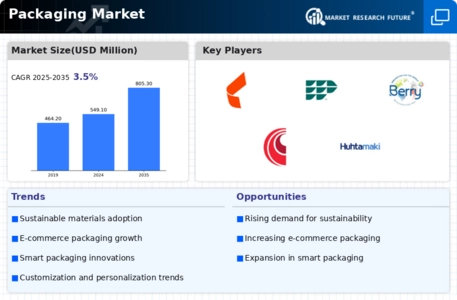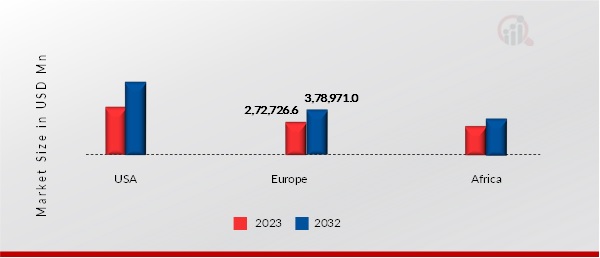Market Trends
Introduction
The packaging industry is in the process of undergoing major changes, and as we enter 2024, this will be driven by a combination of macro-factors, including technological developments, regulatory pressures, and changing consumer preferences. The impact of new materials, automation and digitalization will reshape the solutions and the efficiency of the production process, and will increase the resource efficiency of the entire value chain. Moreover, the increasing regulation of the environment will force companies to change to more sustainable solutions and materials. And finally, the shift in consumer preferences towards more sustainable and convenient packaging will affect the design and functionality of the product. These macro-factors are strategically important for the industry as a whole, as they not only define the competitiveness of the companies but also correspond to the expectations of the public for innovation and sustainability.
Top Trends
-
Sustainability Initiatives
Companies are being compelled to find new, more sustainable ways of packaging. The European Union, for example, has a directive on single-use plastics, which is designed to reduce the amount of plastic waste produced. In order to reduce their carbon footprint, companies like Amcor are investing in biodegradable materials. This trend is expected to lead to innovation in terms of materials and processes, and change the landscape of packaging. -
Smart Packaging Technology
INTEGRATED TECHNOLOGY AND THE INTERNET OF THINGS ARE TURNING PACKAGING INTO AN INTERACTIVE PLATFORM. Companies are using NFC and QR codes to enhance engagement and provide real-time information to consumers. A recent report shows that the smart packaging market is set to grow by 20 per cent per year. This trend will lead to increased customer loyalty and better stock management for brands. -
E-commerce Driven Packaging Solutions
The great growth of the trade in the United States has made it necessary to develop a method of packing goods to insure their safety in transit. The leading manufacturers of the United States are now engaged in innovating protective materials, such as those which have been invented by the firm of Sealed Air, which reduce the percentage of losses by half. This development is to continue, for the growth of e-commerce will force companies to seek more efficient and more sustainable means of packaging. -
Minimalist Packaging Design
A trend towards minimalism is taking hold among consumers. They prefer a simple and practical design. Brands are reducing their packaging to appeal to consumers’ growing concern for the environment. A study shows that 70% of consumers are now more likely to buy from companies that have adopted a sustainable approach. This trend is encouraging companies to reduce their design costs and waste, while also enhancing their brand image. -
Recyclable and Reusable Packaging
Awareness and regulatory requirements are increasing the demand for re-usable and re-cyclable packaging. Several companies, such as Berry Global, are developing multi-use packages that can be recycled multiple times. According to research, 60 per cent of consumers are willing to pay more for sustainable packaging, which has led companies to develop new solutions in this area, which could lead to a circular economy for packaging. -
Personalization in Packaging
Personalised packaging is becoming a major differentiating factor in the market, and brands are deploying it to enhance the customer experience. Using digital printing, companies are creating unique packaging designs that have resulted in an increase of customer engagement of up to 25 per cent. This trend is likely to continue as brands seek to forge closer connections with consumers by providing a more bespoke experience. -
Health and Safety Compliance
The COVID-XIX epidemic has re-emphasized the importance of hygiene and security in packaging. There is a growing demand for tamper-proof and hygienic packaging. A 40 per cent increase in demand has been reported for such packaging. This trend will continue, as long as the safety of consumers is a priority in the choice of packaging materials and designs. -
Automation and Robotics in Packaging
In the process of packing, automation and robotization increase the efficiency and reduce the cost of labor. The production line is speeded up by 30 percent, and the labor cost is reduced by 30 percent. This trend is expected to continue as companies seek to optimize production and meet the needs of the market, and this trend will inevitably lead to a change in the relationship between labor and capital. -
Innovative Barrier Technologies
Barriers are extending the shelf life and safety of products. Mondi is developing new materials that protect against oxygen and humidity. Barriers are extending the shelf life of products by up to 50 percent, which is especially important for perishables, influencing purchasing decisions and reducing food waste. -
Digital Transformation in Packaging
The packaging industry is undergoing a digital transformation, with the introduction of sophisticated digital tools for the design and management of the supply chain. This digitalization is resulting in improved productivity and shorter times to market. Studies show a reduction of up to 20 per cent in operating costs. This will further increase the competitiveness of the industry and the speed of reaction to market changes.
Conclusion: Navigating the Evolving Packaging Landscape
Approaching 2024, the packaging market is characterized by intense competition and considerable fragmentation, with both traditional and new players competing for market share. The trend towards greater innovation and a greater focus on the environment is reflected in regional trends, and this is reflected in the strategies that suppliers are developing. The traditional companies are relying on their strong brands and are investing in advanced technology such as artificial intelligence and automation to enhance their operational efficiency. The new entrants are focusing on flexibility and a more sustainable approach in order to win the attention of consumers who are becoming increasingly aware of the environment. Hence, the winners will be those who are best able to integrate artificial intelligence, automate their processes and offer sustainable solutions. In order to cope with the complexity of the market and position themselves strategically for the future, decision-makers need to prioritise these areas of development.








Leave a Comment